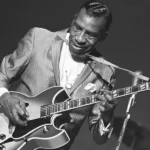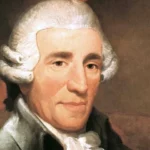Sonny Boy Williamson II, a name synonymous with the blues harmonica, remains an enigma even to this day. His life, like the soulful melodies he produced, was shrouded in mystery and intrigue. This article delves into the life of this iconic musician, exploring his innovations, influences, and the enduring impact he had on the world of blues.
Facts about Sonny Boy Williamson II
Born Alex “Rice” Miller in Mississippi in 1912, Sonny Boy Williamson II wasn’t just a harmonica player; he was a musical revolutionary. While the exact year of his birth is debated, his impact on the blues is undeniable. He elevated the harmonica from a supporting instrument to a lead, capable of carrying the weight of emotion and storytelling that defines the blues. His innovative “tongue-blocking” technique allowed for a wider range of notes and a more expressive sound, influencing generations of harmonica players to come.
Williamson’s music resonated with people from all walks of life. His songs weren’t just catchy tunes; they were raw, emotional expressions of the African American experience in the mid-20th century. Through his music, he gave voice to the joys, sorrows, and everyday struggles of his community, bridging the gap between traditional blues and the burgeoning rock and roll scene. This ability to connect on a deeply human level cemented his status as a musical icon.
The mystery surrounding Sonny Boy Williamson II extends to his stage name. He adopted the moniker from a previous bluesman, John Lee Williamson, leading to much confusion and debate. However, Sonny Boy Williamson II carved out his own unique space in the blues pantheon, eventually earning his place in the Blues Hall of Fame.
What Instruments Did Sonny Boy Williamson Play?
While celebrated for his mastery of the harmonica, particularly the Low D, Sonny Boy Williamson II was a multi-talented musician. He was also proficient in guitar, and his unique style left a lasting impact on blues guitar legends Muddy Waters and Jimmy Rogers.
Williamson’s musicality went beyond instrumentation; he was a gifted songwriter, weaving narratives of love, hardship, and resilience into his music. His songs, including the iconic “One Way Out,” continue to captivate audiences with their raw emotion and timeless appeal.
How did Sonny Boy Williamson get his name?
The story behind Sonny Boy Williamson II’s name is a fascinating tale of ambition, legacy, and the power of a name in the music world. Upon the death of John Lee Williamson, the original Sonny Boy Williamson, Rice Miller recognized an opportunity. Adopting the name of the already established bluesman provided instant recognition, a strategic move that helped launch his career.
While some might question the ethics of adopting another musician’s name, it’s crucial to remember that Sonny Boy Williamson II brought his own distinct style and talent to the table. His innovative harmonica techniques and powerful vocals solidified his place as a blues great, proving that he was more than just a shadow of his namesake.
How many blues musicians were known as Sonny Boy?
The name “Sonny Boy Williamson” became synonymous with blues harmonica, but it was shared by two influential musicians:
Sonny Boy Williamson I: The Trailblazer
John Lee Williamson, known as Sonny Boy Williamson I, was a Chicago blues pioneer. His captivating vocals and mastery of the harmonica in the 1930s and 40s set the stage for a new era of blues music. Although his life was tragically cut short, his influence on the genre is undeniable.
Sonny Boy Williamson II: The Innovator
Alex “Rice” Miller, who took on the mantle of Sonny Boy Williamson II, revolutionized harmonica playing. His “tongue-blocking” technique, a hallmark of his style, allowed for a greater range of expression and complexity. His powerful vocals and innovative approach to the harmonica solidified his place as a blues legend.
The legacy of the two Sonny Boy Williamsons highlights the dynamic nature of blues music. It’s a testament to the way in which musical traditions are passed down, reinterpreted, and ultimately, reborn through new generations of artists.
What Key Harmonica Did Sonny Boy Williamson Play?
Sonny Boy Williamson II’s signature sound was deeply rooted in the Low D harmonica. This specific type of harmonica, tuned an octave lower than the standard D, provided a deep, resonant tone that became synonymous with his music. This lower tuning allowed him to explore a wider range of notes and create a sound that was both soulful and powerful.
The Low D harmonica became an extension of Williamson’s voice, conveying the raw emotion and depth of feeling that characterized Delta blues. This innovative use of the instrument influenced countless musicians and solidified the Low D harmonica’s place in the blues tradition.
Who was the jazz trumpet guy?
The world of jazz trumpet boasts a constellation of legendary names, each leaving an indelible mark on the genre. Pinpointing a single “jazz trumpet guy” is a near-impossible task, as the evolution of jazz trumpet is a testament to the contributions of numerous innovators.
Louis Armstrong stands as a towering figure, transforming the trumpet from an ensemble instrument into a captivating solo voice. His improvisational skills and infectious energy ignited the Jazz Age.
Dizzy Gillespie, with his lightning-fast tempos and complex harmonies, revolutionized jazz trumpet through the bebop movement. His technical mastery and innovative approach continue to inspire musicians today.
Miles Davis, known for his cool demeanor and introspective style, redefined jazz trumpet through his lyrical phrasing and masterful use of space. His impact transcended jazz, influencing generations of musicians across genres.
Wynton Marsalis carries the torch for modern jazz trumpet. A virtuoso performer and dedicated educator, he preserves the traditions of jazz while pushing the boundaries of the genre’s possibilities.
While these names represent a glimpse into the world of jazz trumpet, the genre’s spirit of innovation ensures that new voices will continue to emerge, shaping the future of this endlessly evolving art form.
Who is the singer Sunny Boy?
The name “Sunny Boy” resonates within the music world, but it’s important to distinguish between the blues legends discussed earlier and Namibian rapper, Sunday Shipushu, who performs under the stage name Sunny Boy. Hailing from Oshakati, Namibia, Sunny Boy is celebrated for his unique blend of hip hop and Kwaito music, a genre popular in Southern Africa.
Sunny Boy’s musical journey began in his youth, participating in school concerts and forming a dance group with friends. His collaboration with fellow Namibian artist Gazza on the hit song “Koko” launched him into the spotlight, solidifying his presence in the Namibian music scene.
His debut album, “Young, Black en Gifted,” showcased his signature style, a fusion of hip hop and Kwaito he dubbed “hikwa.” Sunny Boy’s music transcends genre boundaries, blending infectious beats with thought-provoking lyrics that address social issues and everyday realities.
While his musical style differs drastically from the blues legends who share a similar stage name, Sunny Boy’s dedication to his craft, unique sound, and commitment to storytelling through music solidify his position as an important voice in contemporary African music.












